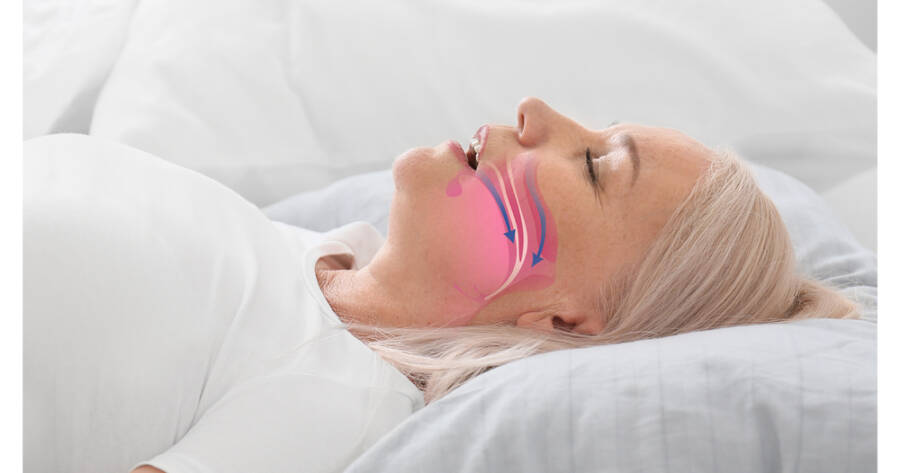Sleep apnea is a common yet often misunderstood condition that affects millions of people worldwide. It disrupts sleep by causing repeated pauses in breathing, leading to poor rest and numerous potential health challenges. While it may seem daunting, various strategies and treatments can help individuals manage this condition effectively. In this article, we’ll explore some of the most recognized solutions, empowering you to take informed steps toward better breathing and restful nights.
Understanding Sleep Apnea
Sleep apnea comes in different forms, including obstructive sleep apnea (OSA), central sleep apnea (CSA), and complex sleep apnea syndrome. OSA, the most common type, occurs when the throat muscles relax excessively during sleep, obstructing airflow. CSA involves the brain failing to send proper signals to the muscles that control breathing. Understanding the type of sleep apnea you may have is a critical first step in finding the right solution.
Common symptoms include loud snoring, gasping for air during sleep, daytime fatigue, and morning headaches. However, these signs alone aren’t definitive, so consulting a healthcare provider for a formal diagnosis is essential. Sleep studies, either at home or in a lab, are the gold standard for identifying sleep apnea.
Lifestyle Changes for Managing Sleep Apnea
For many people, lifestyle adjustments can play a pivotal role in mitigating the effects of sleep apnea. While these changes might not eliminate the condition entirely, they can significantly improve symptoms and overall quality of life.
Weight Management
Excess weight, especially around the neck, can increase the likelihood of airway obstruction during sleep. Losing even a small percentage of body weight may reduce the severity of obstructive sleep apnea. Pairing a balanced diet with regular physical activity can offer multiple health benefits beyond improving sleep.
Sleep Positioning
Sleeping on your back often worsens sleep apnea symptoms, as gravity can cause the tongue and soft tissues to block the airway. Side sleeping is generally recommended and may reduce episodes of interrupted breathing. Special positioning devices or pillows can help you maintain this posture throughout the night.
Reducing Alcohol and Sedatives
Alcohol and sedatives relax throat muscles, exacerbating airway blockages. Limiting or avoiding these substances, especially in the hours leading up to bedtime, can positively impact sleep apnea symptoms.
Medical Treatments and Devices
If lifestyle changes aren’t sufficient, various medical interventions can help manage sleep apnea. The choice of treatment often depends on the severity of the condition and individual preferences.
CPAP Machines
Continuous Positive Airway Pressure (CPAP) machines are a leading treatment for obstructive sleep apnea. These devices deliver a steady stream of air through a mask, keeping airways open. While some individuals find CPAP machines challenging to adapt to initially, modern designs offer more comfort and customization options, improving compliance.
Oral Appliances
For mild to moderate sleep apnea, oral appliances can be an alternative to CPAP machines. These devices reposition the jaw or tongue to keep the airway open. They are custom-made by dental professionals and can be a convenient, portable solution for many users.
Surgical Options
In cases where other treatments prove ineffective, surgical interventions may be considered. Procedures can range from removing excess tissue in the throat to repositioning structural elements of the airway. As with any surgery, it’s essential to weigh the risks and benefits in consultation with a specialist.
Exploring Emerging Therapies
Advances in medical technology have introduced innovative options for managing sleep apnea. While these therapies are not universally suitable, they may be worth exploring with your healthcare provider.
Hypoglossal Nerve Stimulation
This therapy involves implanting a device that stimulates the hypoglossal nerve, which controls tongue movement. By preventing the tongue from blocking the airway during sleep, this approach can reduce apnea episodes. However, it is typically reserved for individuals who cannot tolerate CPAP therapy.
Myofunctional Therapy
Myofunctional therapy focuses on strengthening the muscles of the tongue, throat, and face through targeted exercises. While research is ongoing, preliminary studies suggest that consistent practice may reduce the severity of obstructive sleep apnea in some cases.
Self-Care and Sleep Hygiene
Improving overall sleep hygiene can complement other sleep apnea treatments and promote better rest. Adopting healthy habits may enhance the effectiveness of medical and lifestyle interventions.
Establish a Consistent Sleep Schedule
Going to bed and waking up at the same time every day helps regulate your body’s internal clock. Consistency can improve the quality of your sleep and reduce fatigue.
Create a Sleep-Friendly Environment
Optimize your bedroom for restful sleep by keeping it dark, quiet, and cool. Consider blackout curtains, white noise machines, or cooling mattress toppers to enhance comfort.
Manage Stress
Chronic stress can exacerbate sleep disturbances. Incorporating relaxation techniques such as meditation, deep breathing, or gentle yoga before bed may support better sleep patterns.
Find Support Today!
Sleep apnea is a manageable condition, but finding the right solution often requires a combination of approaches tailored to your specific needs. From lifestyle changes and medical devices to innovative therapies and good sleep hygiene, a variety of strategies can help you breathe better and sleep better.
Always consult a healthcare professional to determine the most suitable options for your situation. With the right support and commitment, improving your sleep quality and overall health is within reach.
